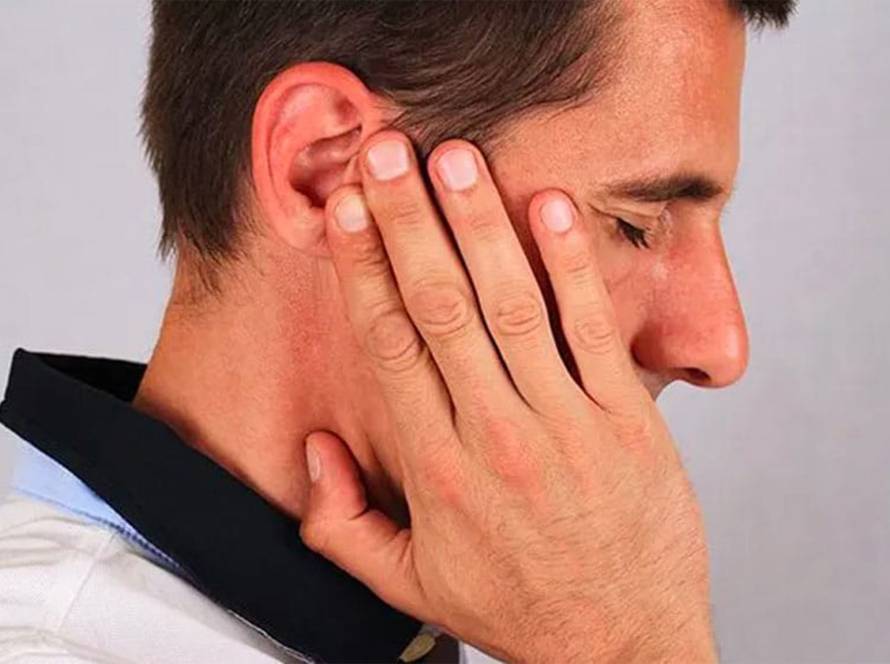Temporomandibular Joint (TMJ) disorders are more common than many realize, affecting millions of people worldwide. However, despite the widespread nature of these conditions, they can often go undiagnosed—sometimes for years—because the symptoms can be subtle or mistaken for other health issues. The TMJ is the joint that connects the jaw to the skull, playing an essential role in vital functions like chewing, talking, swallowing, and even yawning. When something goes wrong with this joint, it can lead to a range of discomforts, which, if not addressed early, can worsen over time.
As a dentist, you are in a unique position to detect the early warning signs of TMJ disorders. With the right awareness, you can help patients receive prompt treatment that may prevent long-term pain, discomfort, and other complications. Below are key symptoms that dentists should look out for during routine dental exams.
1. Jaw Pain or Tenderness
Jaw pain is often the first and most noticeable symptom of TMJ dysfunction. The pain may be localized around the joint itself or in the surrounding muscles, and it can feel like a dull ache or a sharp, throbbing sensation. This discomfort can arise while chewing, speaking, or even when the mouth is at rest. In some cases, the pain might radiate to other areas like the neck, face, or even the ears. Patients may describe it as a constant discomfort or as a flare-up that occurs intermittently.
What to look for:
- Tenderness when palpating around the jaw joint, particularly near the temporomandibular area.
- Complaints from patients about pain or discomfort that gets worse with chewing or talking.
- Worsening symptoms after long periods of jaw use, such as eating a tough meal or talking for extended periods.
2. Clicking or Popping Sounds
Many patients with TMJ disorders will notice clicking, popping, or grinding sounds when they open or close their mouth. These noises occur when the bones of the joint rub against each other or when the disc inside the joint shifts out of place. While an occasional click may not be a cause for concern, repeated, persistent clicking or popping could indicate that the joint is misaligned or the disc is displaced.
What to look for:
- Audible clicking, popping, or grinding sounds when the patient moves their jaw.
- Changes in the sound over time—such as an increase in volume or frequency—could suggest worsening of the condition.
3. Limited Jaw Movement
TMJ dysfunction can make it difficult for patients to open their mouths fully or move their jaw comfortably. This restricted jaw movement is often due to muscle spasms, pain, or mechanical issues within the joint. Difficulty chewing, speaking, or yawning can be frustrating and lead to a further reduction in jaw mobility as patients begin to adjust their habits to avoid pain.
What to look for:
- Difficulty when the patient opens their mouth wide or moves their jaw side to side.
- Limited jaw movement that may be noticed during an exam or self-reported by the patient.
- Complaints of locking or the jaw “getting stuck” in one position.
4. Headaches or Migraines
TMJ disorders often lead to muscle tension in the jaw, neck, and shoulders, which can trigger frequent headaches or migraines. These headaches are often described as tension headaches and may feel like a dull ache around the temples, forehead, or the base of the skull. Because these symptoms overlap with other conditions like sinus issues or general stress, they can sometimes be overlooked as related to the jaw.
What to look for:
- Persistent headaches or migraines, particularly those centered around the temples or jaw area.
- Reports of increased headache frequency or intensity during chewing or jaw movements.
5. Neck and Shoulder Pain
Since the TMJ is intimately connected to the muscles in the neck and shoulders, dysfunction in the jaw joint can cause discomfort in these regions as well. Muscle tension from compensating for TMJ disorders or pain can spread to the upper back and shoulders. In some cases, patients may report a stiff neck or difficulty turning their head, which can also affect their overall posture.
What to look for:
- Complaints of pain or tension in the neck or shoulders that accompany jaw pain.
- Limited range of motion in the neck, especially when combined with jaw discomfort.
- Visible muscle tightness or tenderness in the upper back or shoulders.
6. Teeth Grinding or Clenching (Bruxism)
Teeth grinding (bruxism) is a common behavior associated with TMJ disorders, particularly at night. Patients may not even be aware that they are grinding their teeth, but over time, this unconscious activity can wear down tooth enamel, cause tooth sensitivity, and exacerbate TMJ problems. Grinding and clenching put added strain on the TMJ and can contribute to pain, inflammation, and further joint damage.
What to look for:
- Poor sleep quality (morning fog)
- Signs of clenching or teeth-grinding
- Chipped or cracked teeth that could be a result of grinding.
- Complaints from patients about morning jaw pain or soreness, often linked to nocturnal bruxism.
7. Earaches or Ringing in the Ears (Tinnitus)
TMJ issues are closely associated with ear-related symptoms due to the proximity of the TMJ to the ear canal. Some patients experience earaches, a feeling of fullness or pressure in the ears, or even ringing (tinnitus). These ear-related symptoms often worsen with jaw movement or when the patient eats or talks.
What to look for:
- Complaints of ear pain or a sensation of fullness in the ears.
- Tinnitus (ringing in the ears) or a feeling of clogged ears, particularly when jaw movement is involved.
- A history of recurring ear infections or unexplained ear pain.
8. TMJ Facial Pain or Swelling
In more severe cases of TMJ dysfunction, patients may experience facial pain or swelling, particularly around the jaw area. This may be due to inflammation in the joint or muscles. Swelling may be localized to one side of the face or affect both sides.
What to look for:
- Swelling or inflammation around the jaw or face that appears to be linked to TMJ pain.
- Tenderness or sensitivity to touch in the facial muscles, particularly over the TMJ (in front of ears).
What Dentists Can Do to Help
1. Examine Jaw Movement
- During routine exams, ask patients to move their jaw in different directions—opening, closing, side to side, and forward and backward. Pay close attention to any discomfort, abnormal sounds, or restricted movement.
2. Ask About TMJ Pain and Discomfort
- Directly inquire whether patients have experienced jaw pain, headaches, earaches, or other symptoms associated with TMJ dysfunction. These questions can reveal valuable clues to a potential issue.
3. Look for Signs of Bruxism
- Check for signs of tooth wear, chipping, or excessive enamel erosion, all of which may indicate nighttime teeth grinding. Additionally, keep an eye on any signs of muscle tenderness or facial asymmetry that could be linked to jaw clenching.
4. Consider a Referral to a Specialist
- If you suspect TMJ dysfunction, consider referring the patient to an Orofacial Pain specialist for further evaluation.
Conclusion
As a dentist, your role in detecting TMJ issues cannot be overstated. With the right awareness and approach, you can help patients identify TMJ problems early, providing treatment options that alleviate pain and prevent further complications. Early intervention is key to improving a patient’s quality of life, so don’t overlook these subtle but important symptoms during your exams. By staying vigilant and informed, you can make a lasting impact on your patients’ health and comfort.


